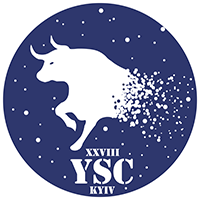Speaker
Description
Zone of Avoidance (ZoA) is the sky area that is blocked from extragalactic observations by the plane of our own Galaxy. It covers approximately 20% of the sky in the optical and poses significant problems for these cosmological tests that require full-sky coverage, necessitating compensation, usually by artificial filling. There are many possibilities of filling the ZoA with artificial sources, therefore it is of vital importance to determine the optimal method prior to performing any cosmological tests, as the method chosen may naturally influence the results. We want to establish an optimal way of populating the ZoA with artificial sources, in order to reliably calculate the clustering dipole of galaxies. Such a dipole (its direction and amplitude) informs us about the acceleration of the Local Group of galaxies (which the Milky Way is a part of) with respect to the rest-frame density field of galaxies and dark matter, independently of the CMB-based estimations. In my talk I will present the tests of the methods of populating the ZoA performed on simulated galaxy catalogs, such as Millennium XXL. Then I will show how the resulting optimal ZoA compensation method is used to populate the ZoA of the 2MPZ galaxy catalog and what effect it has on the clustering dipole estimation based on this catalog.

